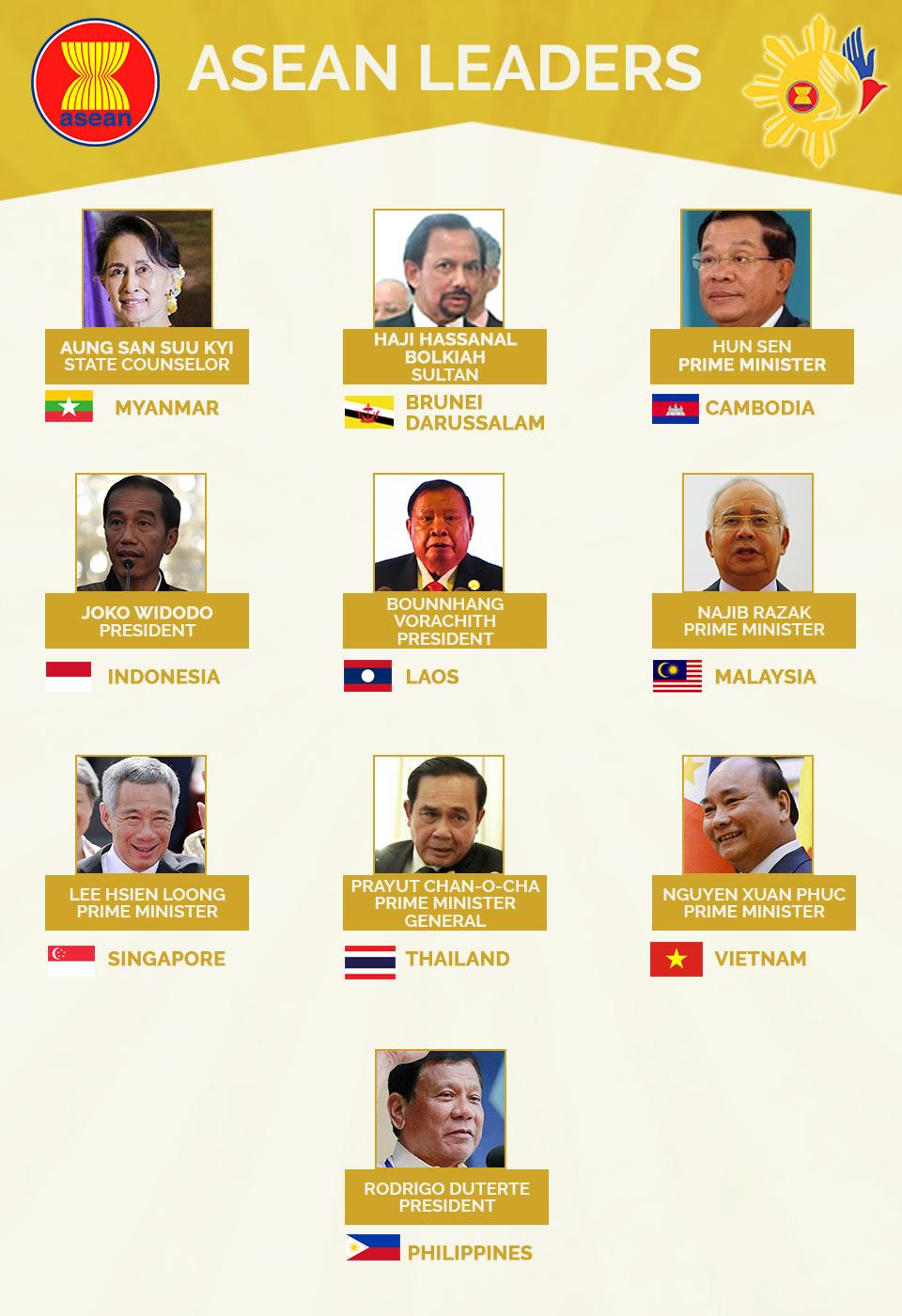ASEAN chases regional peace and stability 50 years after inception
The 50th anniversary of the Association of Association of Southeast Nations goes into full swing starting this week as the 10-member regional block holds the 30th ASEAN Summit in Manila, marked by unprecedented security preparations involving an estimated 40,000 police and military personnel to ensure peace and order.
Host Philippines, one of the five founding states of the bloc, has set what it calls six thematic priorities to be discussed by ASEAN leaders during the country's year-long chairmanship, including peace and stability, maritime security and cooperation, inclusive and innovation-led growth, as well as concepts of resiliency, people-oriented and people-centered and model of regionalism and global player.
The priorities are considered by the Philippines as vital, relevant and significant to the regional bloc and its estimated population of more than 650 million.
Among the state leaders arriving this week for the summit are:
- State Counselor Aung San Suu Kyi of Myanmar
- Sultan Haji Hassanal Bolkiah of Brunei Darussalam
- Prime Minister Hun Sen of Cambodia
- President Joko Widodo of Indonesia
- President Bounnhang Vorachith of Laos
- Prime Minister Najib Razak of Malaysia
- Prime Minister Lee Hsien Loong of Singapore
- Thailand: Prime Minister General Prayut Chan-o-cha
- Prime Minister Nguyen Xuan Phuc of Vietnam
Milestones achieved
The association was formed on August 8, 1967 after Indonesia and Malaysia decided to end an armed conflict known as Konfrontasi, in which the Philippines did not participate. Together with Singapore and Thailand as founding members, ASEAN was established.
Other Southeast Asian states also joined the association: Brunei Darussalam on January 7, 1984; Vietnam on July 28, 1995; Lao PDR and Myanmar on July 23, 1997; and Cambodia on April 30, 1999 to complete the current 10 member states.
In its 50-year history, the bloc has achieved milestones that changed the economic and political landscape of the region, including the geopolitics of Southeast Asia.
- November 27, 1971 – the original members signed the Declaration of Zone of Peace, Freedom and Neutrality in Kuala Lumpur, Malaysia. The document recognized the right of every state, large or small, to lead its national existence “free from outside interference in its internal affairs as this interference will adversely affect its freedom, independence and integrity.”
- February 23-24, 1976 – the First Asean Summit convenes in Bali, Indonesia.
- July 5-8, 1977 – the ASEAN-European Union dialogue relations was formalized.
- January 28, 1992 – the agreement on Common Effective Preferential Tariff Scheme for the ASEAN Free Trade area was signed.
- July 25, 1994 – ASEAN established the ASEAN Regional Forum (ARF), which focuses on “effective consultative” Asia-Pacific Forum for promoting open political dialogue and security cooperation in the region. Apart from the ASEAN member states, participants to the ARF include Australia, Canada, China, European Union, India, Japan, South Korea, North Korea, Mongolia, New Zealand, Pakistan, Papua New Guinea, Russia, and the US.
- December 15, 1997 – the heads of states of ASEAN formulate the ASEAN Vision 2020, setting the tone for the ASEAN Economic Community.
- October 7, 1998 – signing of the Framework Agreement on the ASEAN Investment Area.
- November 4, 2002 – ASEAN-member states and China signed the declaration of the Conduct of Parties in the South China Sea, a prelude to the proposed Code of Conduct in settling territorial disputes.
- October 7, 2003 – ASEAN signed the Bali Concord II, the catalyst for the creation of a single market and tariff and non-tariff road blocks within the region, as well as the promotion of a democratic peace-making process.
- December 14, 2005 – the first ASEAN+6 or the East Asia Summit was held. It comprised the 10 ASEAN members plus China, Japan, South Korea, India, Australia and New Zealand.
- November 20, 2007 – ASEAN signed a charter giving its member states a legal identity, a first step towards a free trade area by 2015.
- May 2013 – start of negotiations on the Regional Comprehensive Economic Partnership (RCEP), a trade zone between ASEAN and six trading partners China, Australia, Japan, India, New Zealand and South Korea.
- December 2015 – the ASEAN Economic Community was launched.

ASEAN 2017 unraveling
In January 2017, the Philippines unveiled ASEAN 2017. President Rodrigo Duterte said the year-long hosting would take note of the enduring ties that bind the ASEAN member states, affirm their shared cooperations and secure the region's future.
ASEAN 2017 is unraveling on a theme of "Partnering for Change, Engaging the World."
With the 30th ASEAN Summit and Related Meetings running from April 26 to 29, traffic rerouting will be implemented in some parts of Pasay City and Makati City.
LOOK: Traffic advisory for the 30th @ASEAN Summit. Plan your routes ahead. #ASEAN2017 #traffic pic.twitter.com/lIGyIPnqKs
— ASEAN 2017 (@ASEAN2017) April 21, 2017
Malacañang suspended work and classes in Metro Manila on April 28 for the ASEAN Summit.
Work suspension was also declared on April 27, but only for government offices in Manila, Makati and Pasay. School officials were given the last say on whether classes will be suspended. — VDS, GMA News




